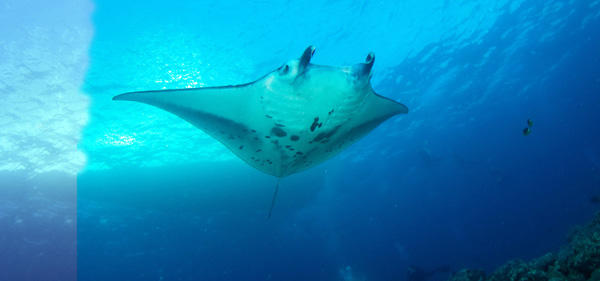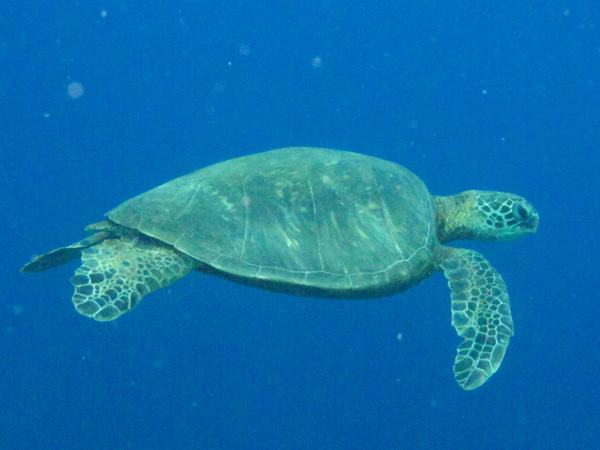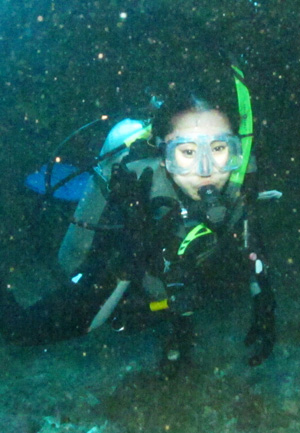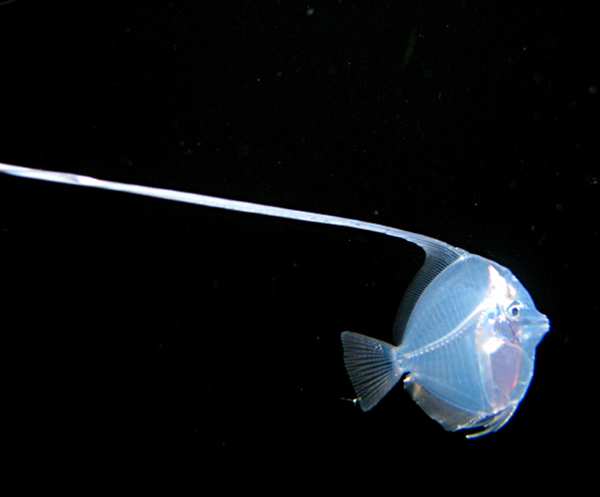KONA, HAWAII - The captain of our tiny boat points his search lantern out into the darkness and we follow the beam of light to a dive spot about 20 minutes off the shore of this Pacific island treasure.
I’m one of six people who’ve paid dive master Neil Hoogenboom, $175 (U.S.) apiece for the chance to jump into the night surf on a “black water dive” — the most exciting and dangerous for divers.
My fellow divers are all researchers or doctors, professionals who’ve come to study the vast array of plankton in the waters off Hawaii’s Big Island.
It’s my second night dive adventure; my first was with instructor Keller Laros, who led a group of us in search of Hawaii’s elusive manta ray, the “butterfly of the sea,” which patrols tropical waters under the cloak of darkness looking for its main food source, plankton.
During my five-day stay I’ve crawled into tight underwater caves and through lava rock formations; come face-to-face with exotic and colourful sea creatures; danced on the decks of sunken ships; and shared frightening dive stories — like the time I surfaced after a dive in Cuba only to find my boat was gone — with people as passionate about diving as I am.


Left: The biggest thrill for divers is to come face-to-face with a manta ray. Right: Giant sea turtles float above divers.
Excitement builds when Neil tells us we’ve almost reached the dive spot. I get an adrenalin rush as the captain cuts the boat’s engine and drops anchor. For a moment, I forget the first commandment of diving: Keep your emotions in check. I quickly gather my thoughts, though, and jump to my feet; check my air tanks and regulator; and dive overboard into the black surf.
I bob in the darkness alone waiting for the others to dive in. But they hesitate.
Suddenly, I remember what a fellow diver once told me about why it’s important to dive in groups at night: “That way the shark has a choice.” If any sharks are nearby, I’ll never see them on this moonless night.
My worries are short-lived, though, as the others finally join me. Tethered to the boat to prevent the angry currents from pulling us out to sea, Neil leads us under the surface where we turn on our small lanterns, which instantly spotlight jellyfish and plankton — their ghostly geometric shapes are a breathtaking sight as they stand out against the black abyss. I feel like I’m floating in another universe.
The surrounding majesty keeps us spellbound for the 40-minute dive.
Later, on the way back to shore, we compare this experience with the manta ray dive. They’re both exciting, but we agree that seeing a manta ray up close is the thrill of a lifetime.Maybe that was because there is no one better qualified than Keller when it comes to leading a manta ray night dive.
Keller founded the Manta Pacific Research Foundation in 1994 and he’s devoted his life to studying the stealth jet-shaped fish, which is actually a member of the shark family.
The boat was packed with divers and snorkelers the night we went out in search of Hawaii’s mantas. When we reached a spot where Keller thinks we have the best chance of seeing the giant fish, we dive in and quickly sink to the bottom, 15 metres below the waves. The snorkelers gather in a circle on the surface.
We all turn our lanterns on simultaneously and instantly the plankton becomes a neon spectacle. Not long into the 50-minute dive, a massive manta ray floats into view.
Divers and snorkelers watch in wide-eyed amazement as the slow-moving predator feasts on the dinner we’ve spotlighted for it.
Nothing tops Hawaii’s waters for dive thrills. Each time I dive, I’m rewarded with fascinating experiences … like exploring Henry’s Cave.
This spot off the Big Island, named after “Henry” the whitetip reef shark who calls the cave home, is one of the most beautiful, and frightening places I’ve ever explored.
The cave’s ceiling is so low, my tank and belly both get scraped. Henry is elusive; few divers ever get to see him. But on this day, he pokes his head out just long enough to give me another precious memory.


Left: Diver Karen Wang fulfills her dream of exploring Hawaii under water. Right: The marine beauty one sees under Hawaii’s surf is truly remarkable, especially on a night dive.
The sunken ships that lie in Hawaii’s coral-filled waters are always fun to explore. They’re the perfect hiding place for turtles, sharks, moray eels and other sea creatures. But even more amazing are the dramatic lava caves, the biggest and best of which are known as “The Cathedrals,” off the coast of Lanai.Pardon the pun, but every diver prays one day to enter The Cathedrals, which have straight drops of more than 100 metres in some places.
Divers with good buoyancy skills are rewarded with sightings of Hawaii’s less common fish species which occupy The Cathedrals.The unique formations, created by molten lava that spewed out of volcanoes millions of years ago when Lanai was first being shaped, are guarded by spinner dolphins, which enjoy escorting dive boats to the spot.
The interior is a beautiful array of lava-rock tubes that look like organ pipes, caverns, ledges and walls. And light streaming from the surface turns the cracks and crevices into stained-glass-like windows.
Everyone in our dive boat is anxious to have a picture of them swimming alongside the giant sea turtles that hang out at The Cathedrals and the fact that I see angel fish floating nearby just confirms why this place is the holiest of Hawaii’s dive spots.
As beautiful as Hawaii is on the surface, only divers know it’s even more beautiful under its waves.
Information
Things you need to take on a dive holiday:
• Mask, snorkel, scuba fins, BCD (buoyancy compensators), regulators and octopus, wetsuit.
• Rental cost for BCD, Regulator and Wetsuit is around $10-$20 (U.S.) per piece.
• Tanks will be supplied at your destination.
• A one tank dive lasts about 45 minutes; a two take dive is about 90 minutes.
Dive information about Hawaii:
• 2-tank morning boat dive: $130 - $200 (U.S.)
• 2-tank manta ray night dive: $145
• 1-tank black water dive: $175 (Certificate required for these dives)
• Discover scuba shore dive: $100 (Certificate not required for this dive)
Karen’s Top 5 dives and dive spots in Hawaii:
1- Garden Eel Cove (Manta Ray night dive)
2- Black Water night dive
3- Lanai Cathedral
4- Molokini Crater
5- St. Anthony Wreck
Karen’s dive experience:
Karen Wang received her dive certification in 2008 and has been exploring waters around the world ever since. She holds a “rescue diver” certification and has logged almost 60 dives in exotic places like Cuba, Nice (France), the Philippines, Hong Kong and Hawaii.
Who to dive with in Hawaii:
• Jack’s Diving Locker, 75-5813 Alii Drive, Kailua-Kona, Hawaii, 96740, www.jacksdivinglocker.com •
Maui Dive Shop www.mauidiveshop.com